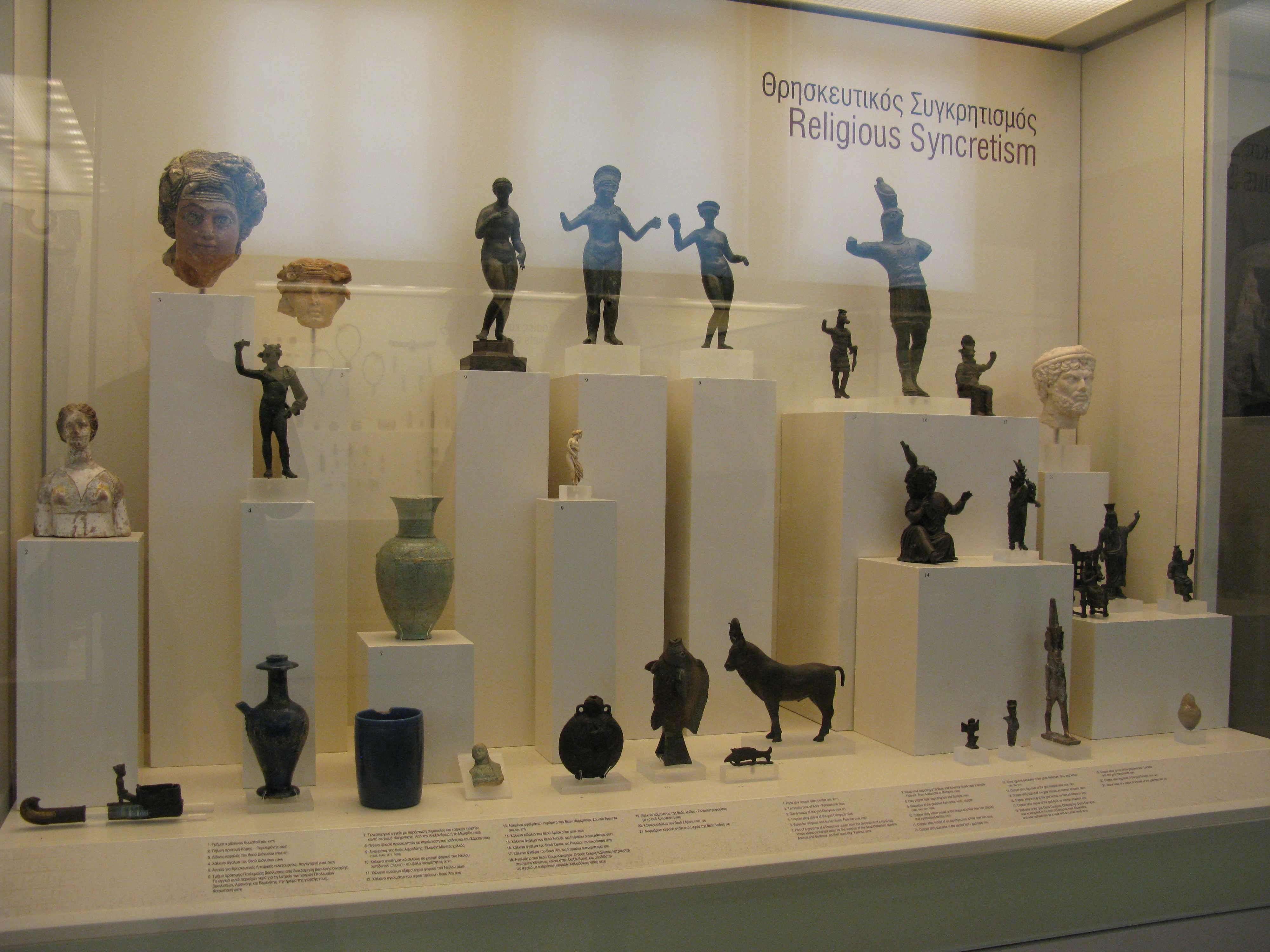
While religious concepts and imagery remains off-limits in many contemporary art galleries, religious artifacts are beginning to find more of a reception in the world’s museums. In the Catholic magazine Commonweal (March 10), Daniel Grant writes, “Sincere expressions of spirituality or religious faith are largely absent from art galleries, except the ones that various churches and synagogues around the United States maintain or the museums of religiously affiliated colleges and universities. Instead, religion appears—when it does appear—as an object of scorn and suspicion.” Grant cites exhibitions at the Virginia Museum of Contemporary Art, which included a painting by Mark Ryden showing a little girl in a Communion dress sawing into a piece of ham that bears the Latin inscription that translates into the “Mystical Body of Christ.” In 2015 the Milwaukee Art Museum acquired the controversial portrait by Niki Johnson of Pope Benedict XVI, “Eggs Benedict,” which was created with 17,000 multi-colored condoms. Grant traces much of the disdain and dismissal of religion to the art school and Master of Fine Arts programs, where students are actively discouraged from creating work that addresses spirituality, ritual, and faith, especially if it concerns Christianity. Art historian and critic James Elkins says that student artists are trained to concentrate on “criticality in relation to existing power structures,” be they received ideas, capitalism, or the church.
While much contemporary art focuses on identity, such as race, gender, and sexual orientation, and religion is one element of identity, those other identity markers are more fluid and open to interpretation, whereas religion is “more set in time and less open to reconsideration, certainly less tolerant of difference,” Grant writes. By the time these artists reach the commercial art world, “they know to keep their beliefs quiet or face rejection.” Grant concludes, “What does seem unnerving is the fear that many art-gallery and museum directors have about offending visitors, even when many of those museum officials bravely defend—on grounds of free expression—artwork that might force parents to cover their young children’s eyes.” The new book Religion in Museums (Bloomsbury, $26.96), edited by Gretchen Buggein, Crispin Paine, and S. Brent Plate, makes a similar critique, though some of the contributors see signs of greater openness to religious themes surrounding art and artifacts. In the Foreword, Sally Promey of Yale University notes that the new interest in religion “roughly coincides with the dismantling of secularization theory,” which had led museums to see religion as a “vestigial organ or appendage, a relic of the past, or a token of presumably less advanced civilizations. …That Sister Corita Kent can be resurrected in 2015–16 as a Pop artist, with art historians paying scant attention, beyond the merely descriptive, to the substance of her religious convictions and practice, however, provides a recent example that demonstrates how tough it is to shake fundamental ingrained cultural hierarchies and biases.”

The election of U.S. President Donald Trump has mobilized the leaders and clergy of mainline and liberal Catholic churches, though it remains to be seen if the members of these churches can be stirred to action to the same extent. Reports indicate that the religious left is being rejuvenated over protests against Trump on such […]
“Rap got religious in 2016. Its beats and bars were baptized by holy lyricism and Gospel samples,” writes Zac Davis in the Jesuit magazine America (March 6). Kanye West started the trend, which is also in evidence among such rap artists as Chance the Rapper and Kendrick Lamar. Davis writes, “For much of the 2000s, […]
Jewish culture is being re-branded and marketed to secular Jews, intermarried couples, and non-Jews, reports Bloomberg Businessweek (March 28). While there has “long been a mainstream taste for Jewish humor and food…the [recent] fervor is something new,” writes Jennifer Miller. Pioneering such marketing of a wide range of Jewish experiences and culture is the lifestyle […]
The use of vouchers in religious schooling may reveal both “good news” and “bad news” for churches, according to a recent study. The paper, presented at the recent meeting of the Association for the Study of Religion, Economics, and Culture, is one of the first studies to look at the effects of vouchers on religious […]
Urban and spiritual renewal are being joined by churches seeking to minister in gentrified areas of cities in the U.K., reports The Guardian (March 7). While urban planners and theorists have assumed that gentrification accompanies and even helps generate secularization, recent studies have suggested otherwise. The article notes that the growth that has taken place […]
External powers have exercised an influence in the South Caucasus, a region with small countries (Armenia, Azerbaijan, and Georgia) on one of the borders between Islam and Christianity, for centuries. Religion may be one of the channels serving such purposes and may thus be feared by political elites, though it is one among a range […]
Hispanic Protestants in the U.S. are one of the few sectors of American Christianity that continue to grow, but they are also becoming so diverse that it is difficult to make many generalizations about them, according to the new book Latino Protestants in America (Rowman and Littlefield, $38), by Mark Mulder, Aida I. Ramos, and […]
Bnei Baruch emerged from a small circle of students of the Kabbalah in Israel in the 1990s to become one of Israel’s largest new religious movements that is taking on a global expression. The movement, numbering 50,000 participants in Israel and 150,000 worldwide, takes a pragmatic approach to the mystical Jewish texts known as the […]